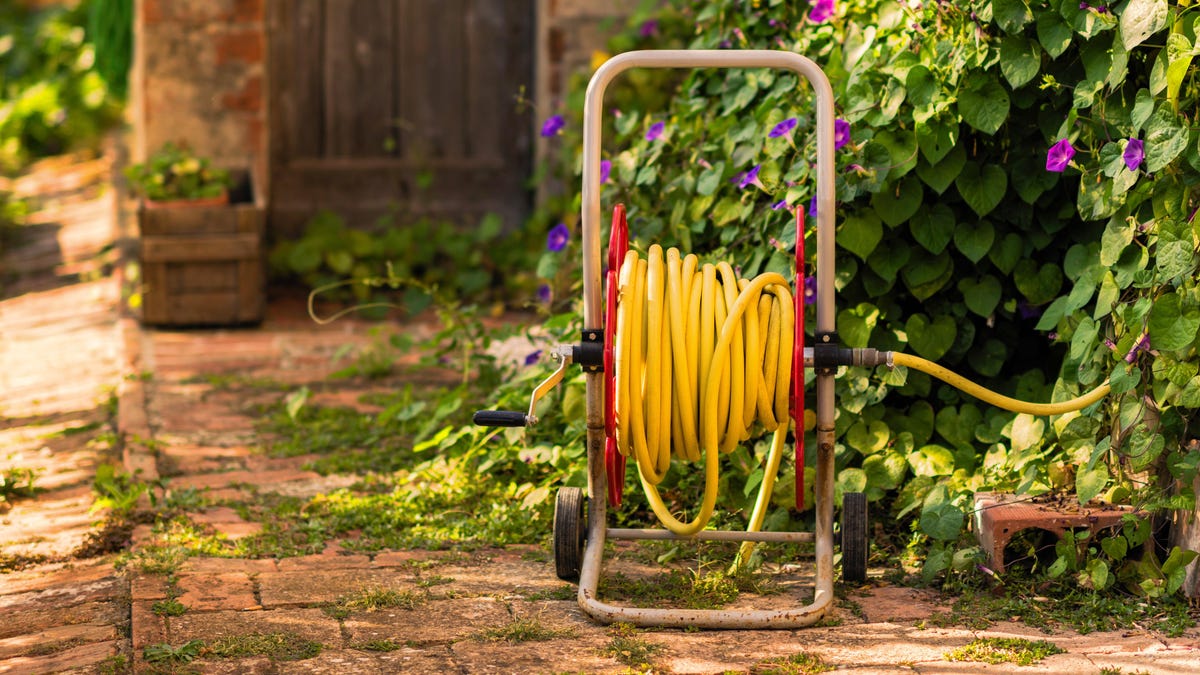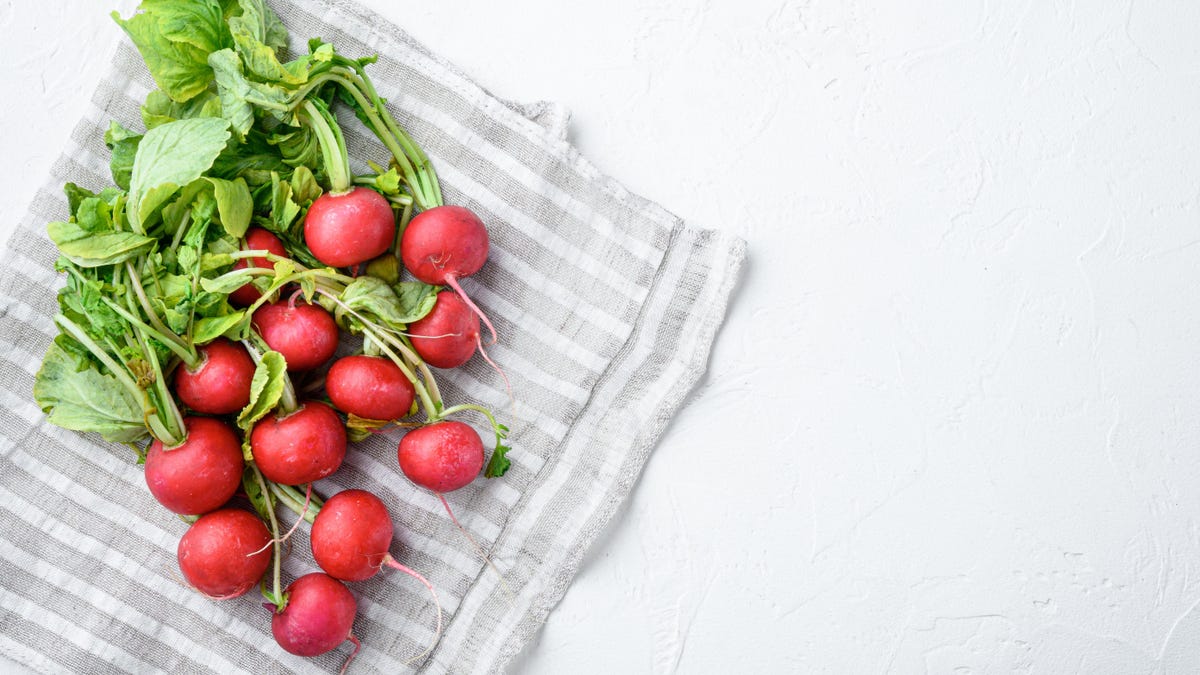Five Types of Garden Hoses (and Which You Should Choose)
You probably don’t give your hose a lot of thought until it starts leaking, at which point you are reminded how weirdly expensive hoses are, and how little you’ve previously thought about them. It’s easy to forget how useful...

You probably don’t give your hose a lot of thought until it starts leaking, at which point you are reminded how weirdly expensive hoses are, and how little you’ve previously thought about them. It’s easy to forget how useful a tool it is until you find yourself unable to water the garden, give the dog a bath, clan out a garbage can, or rinse tree sap off of your car.
Over the last 25 years, I have bought every damn hose on the market, then eventually run over it with my car and been forced to replaced it, again. Here’s what my experience has taught me about which hoses are worth buying and when.
(First, a quick reminder on basic hose upkeep– you should disconnect your hose every winter, bleed it as dry as you can, then store it somewhere it won’t freeze with water inside it. You don’t have to spool or wind your hose, but you should not drive over it—though everyone eventually accidentally does.)
The standard green garden hose
We were all young and broke once, and this is the hose of our youth. It’s the cheapest one you can buy, often it’s sized down 1/2-inch diameter instead of the 5/8-inch your outdoor hose bib is likely to be), meaning it takes longer to water. The material is cheap and will split easily, no matter what the label promises. It’s highly sensitive to environmental conditions, from high heat to below-freezing cold. It kinks super easy, and once it forms a kink, it will kink in that spot again and again. If the hose somehow survives more than a season or two, it’s going to inevitably start to leak at the connection point when the plastic fails.
The one legitimate use for this kind of hose is when you need passive hoses (hoses you
never plan to
move
) to connect a watering system or something similar. Otherwise, these are a one- to
two-
season hose.
Pros: Cheap. Cons: Everything else.
Can you run over it? In my experience, you definitely cannot.
When to buy it: Only when you can’t afford better or need a hose to passively deliver water to a stationary object (like a watering system).
The expandible hose
Man, I was such an easy sell on this puppy, I practically screamed “take my money” to the television every time the commercial came on. Expandibles were sold as super light and impossible to kink, delivering the thrilling opportunity to watch it expand with water and then shrivel up like a flaccid penis when you turned the water off. It was not, I’m ashamed to admit, as thrilling as the commercial promised. The upsides are definitely the lightness, and the fact that it indeed did not kink. But it did mysteriously tie itself into knots, and it sprung leaks all the time. Annoyingly, you had to turn off the faucet a minute or so before you were done watering so the hose would empty and shrink. Despite buying ten of them (I was deeply committed, and sure I hadn’t found the right brand yet), they never, ever lasted more than a season.
Pros: Won’t kink, easy to maneuver. Cons: Not very durable, leaky.
Can you run over it? Not even once.
When to buy it: Those with limited space, living in a climate with mild winters and summers, who don’t need to water much and are committed to putting it away after each use.
The heavy duty hose
After a few hoses have required replacing and you have a little more disposable income, you will at some point go all in and buy the heaviest duty hose you can. I certainly did. And to be fair, it was a beast. Over five seasons it never once sprang a leak, and thought it would occasionally kink, as soon as you unbent it, the hose forgot and didn’t form any memory in the rubber. So what made me finally ditch this thing? The weight. It was actual exercise to move it around the yard and coiling it was absolutely out of the question. As a result, it often laid limply around the yard until I needed it in a different spot. The same heaviness was a major threat to my garden, as moving it around meant possibly crushing a few plants; more than once I took out a delphinium or tomato by giving it a gentle tug to water something a few feet away, and realizing it had clipped a tall stalk.
Pros: Built like a tank. Cons: Heavy, expensive.
Can you run over it? A fleet of tanks could run over this hose without it causing an issue.
When to buy it: You’re a farmer, and also possibly a bodybuilder.
The metal hose
Lifehacker’s managing editor Meghan Walbert swears this hose can do absolutely no wrong, pointing out how easy the hose is to coil. To be fair, it is highly satisfying to do so, given its general slinkiness, and if that’s all I had to use a hose for, this hose and I would still be in our honeymoon phase. But I had a few issues with it. I didn’t love how hot the metal got in summer, which made it hard to hold, and also heated the water inside the hose. Since I don’t want to flambé my nasturtiums, it means running the hose for a minute until the water cools off. Nor did I love that it was 1/2-inch diameter, because ideally you want to get as much water out of your hose bib and into the hose as possible, and control it at the end of the hose with your handle. Also, it flunked the true Amanda test, which means you can’t really run over it with your car.
Pros: Easy to coil up and store. Cons: Heats up easily, fragile, low capacity.
Can you run over it? Once, maybe. But not twice.
When to buy it: You live in a mild climate, use a hose only occasionally, and can store it where it won’t get run over. It is, for these reasons, often a good city hose.
The retractable hose
I’m now two summers in with my wall-mounted retractable hose. Retractables are generally stored in a case mounted to the wall. You pull it out when you need it and, when finished, give it a slight tug so the hose retracts itself into the case like a tape measure. A smaller hose connects the retractable hose to the hose bib, and the hose bib sometimes swivels as well. There are only a few fussy downsides– the hose was designed to be to the right of your hose bib, so the connector hose runs out the left side, which doesn’t look right if you have to mount it to the left of the hose bib, as I do. It works fine, but it’s a cosmetic issue. Also, you have to install it, which you don’t have to worry about with any other hose; for me that took about fifteen minutes. The hose is black, so if you leave it unspooled, it will heat up the water inside during the summer.
The upsides far outnumber those downsides, however. First, because it is mounted off the ground, you’ll crush far fewer plants as you drag it around. Generally, because it is retracted most of the time, the water inside it isn’t heated at all. The hose itself is quite light, so it is easy to move around. Lastly, if you’re someone who never coils a hose out of laziness or because there just isn’t a good place to store it, this solves both problems in a deeply satisfying way.
Pros: Super easy to store, which eliminates many potential hose issues. Cons: You have to be able to mount it to the wall.
Can you run over it? I don’t know yet, because the ease of retracting it means it has never been in the way of my car tires.
When to buy it: When you need 100 feet of reach or less, can mount the hose within 5 feet of the hose bib, and do not specifically need a heavy duty hose. (This should cover almost everyone.)

 Hollif
Hollif 































